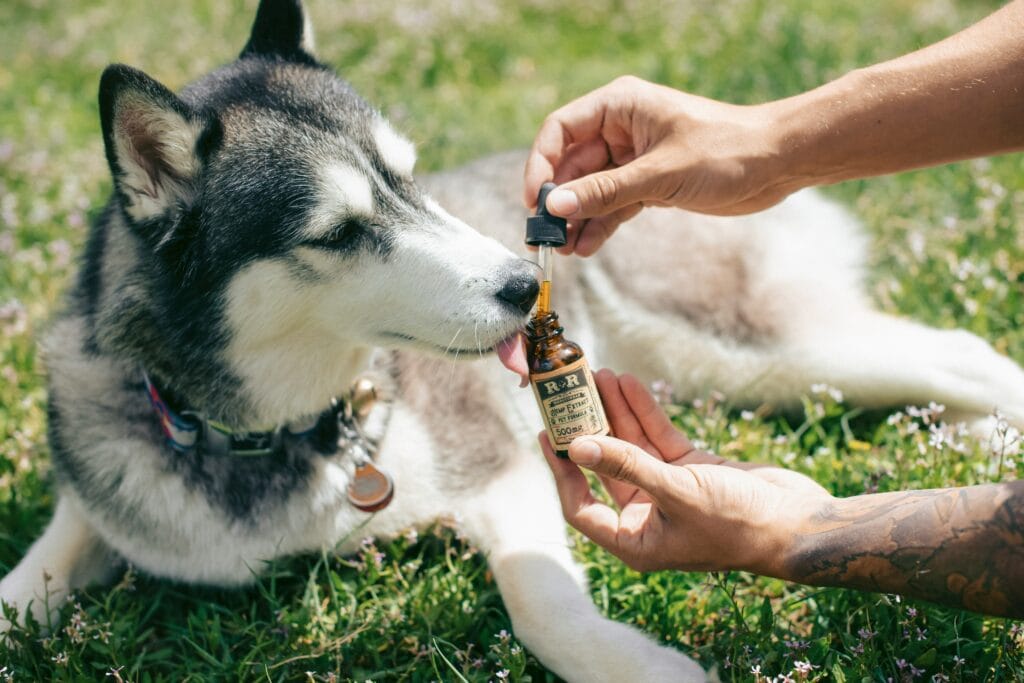Please stop calling flea prevention poison
As a board-certified veterinary dermatologist®, I talk to my clients about flea prevention all the time. I see a patient with symptoms of flea allergy dermatitis as least once a day, and usually more than that. Most of these pet owners are not actively avoiding flea prevention for their pets; they just don’t see the need for it and a little discussion is all it takes to get the patient back on track. There is another subset of pet owners, though, who absolutely refuse to give flea prevention to their pet. A common refrain I hear from these pet owners is, “I don’t give that poison to my pet!” Guys, we need to talk. I know these owners mean well, and they’re just trying to do what’s best for their beloved pets, but calling flea prevention “poison” is not accurate and a lack of good flea prevention is very likely contributing to their pet’s skin problems. Let me try to unpack this controversial topic.
Poison, defined: “a substance that through its chemical action usually kills, injures, or impairs an organism.” When we use the term poison, the context generally implies intent to kill. Rat poison is a substance that is purposefully given to rats with the intent of killing them. I think this implied intent is the reason it raises my hackles so much when people call flea prevention “poison.” I feel like I am being accused of trying to poison my patients, which is such an untrue and hurtful suggestion that I feel the need get defensive.
What are isoxazolines? This is a class of flea and tick preventative that includes Bravecto (fluralaner), Nexgard (afoxalaner), Simparica (sarolaner), Credelio (lotilaner), and Revolution Plus (selamectin and sarolaner). They work by inhibiting the nervous system of arthropods (insects and arachnids), specifically by antagonizing the ligand-gated chloride channels on both GABA and glutamate receptors. This potently inhibits the arthropod nervous system resulting in paralysis and death of fleas, ticks, and mites. These drugs are selective for the receptors on arthropod (bug) nerves and aren’t supposed to bind the nerves of mammals.
Why I love them: This class of flea preventative works really well to kill fleas and ticks and they don’t cause vomiting very much, which was the biggest problem with the previously most effective class of flea preventative, spinosad (Trifexis, Comfortis). Most of my patients have allergic skin disease, which makes them exquisitely sensitive to even small numbers of flea bites, leading to itching, inflammation, and skin infections. My patients who take an isoxazoline flea prevention regularly, year-round, tend to just do better overall with less itching and fewer flares of infections. The patients who don’t take one tend to be constantly flared up and need way more medications to keep them comfortable. The vast majority of my patients who take these drugs don’t show any side effects at all.
Then what’s the problem? In a small number of pets, the isoxazolines appear to affect the mammalian nerve receptors instead of just the bug nerve receptors, and it causes neurological side effects. On September 20, 2018, the FDA released a public health advisory, warning owners of the potential for neurologic adverse events in dogs and cats when treated with drugs that are in the isoxazoline class. Within hours of the FDA’s statement, the internet exploded with talk about the possible side effects. Social media posts went viral. Petitions circulated demanding these drugs be removed from the market. Dog breeders made potential buyers promise never to use these products. You know how hysteria can spread online.
The problem with the FDA warning is that it made no mention of how common these side effects are, nor did they explain how serious they were. They did say, “The FDA considers products in the isoxazoline class to be safe and effective for dogs and cats,” but that sentence was overshadowed by mentions of “muscle tremors, ataxia, and seizures in some dogs and cats.” Seizures? That sounds super scary! It sounds like dogs are dropping dead right and left! Why would anyone give their pet something that could kill them?! I can understand why panic would spread in the aftermath of such as vague and uninformative press release. Luckily, the European counterpart of the FDA (The European Medicines Agency) was much more informative: “Side effects with Simparica are not common. However, the following side effects are seen in less than 1 dog in 10,000: mild and short-lived vomiting and diarrhoea as well as tremor (shaking), ataxia (inability to coordinate body movements) or convulsions. These signs usually resolve without treatment.”
So how common are these neurological side effects? Less than 1 in 10,000– that is quite rare! How dangerous are these side effects? Most resolved without treatment. Yes, even a seizure (which appears very frightening to the average person) usually stops on its own after a few minutes. Just don’t give that drug anymore and in the vast majority of cases, they’ll be fine. If your pet already has a neurological issue, then talk about it with your veterinarian before using one of these drugs, but for all other pets, the chances of this causing a life-threatening issue is really, really low. Here is why parasite prevention gets blamed so often for sudden death: The FDA requires that any serious side effect that occurs within 15 days of administering a drug be reported. Fifteen days is a long time. Studies have shown that most pets that die suddenly had a serious underlying problem like a tumor that suddenly ruptured or a heart issue, but the average person does not get an autopsy done on their pet, so many people never find out the cause of their pet’s tragic, sudden death. Parasite prevention gets blamed because grieving pet owners need to find some reason for the death, and for many pets, flea and heartworm prevention were the only drug they were given in last month. That doesn’t mean the drug is what caused the death (and studies have shown that unrecognized internal disease is BY FAR the most common cause of unexpected death in pets.)
You might ask, why am I harping on this issue so much? What do I have to gain? What kind of kick-back am I getting from BigPharma to be saying these things? The honest answer is: I am telling you this because I care about my patients and I want their skin disease to get better. Most of the patients I see as a veterinary dermatologist have skin allergies. Most pets with skin allergies are also allergic to flea saliva. When they get bit by a flea, a protein in the flea saliva starts an immune reaction that leads to inflammation in the skin. This shows up as itching, redness, hair loss, and skin infections. I have seen countless patients that would not get better, no matter how hard I tried to help, until their owner used a good flea prevention. Even when the owner insisted they had never seen a flea on their pet, it doesn’t matter! Occasional flea bites are enough to contribute to skin inflammation, and fleas are tiny and well hidden by pet fur. If your pet goes outside, I guarantee they are exposed to fleas. Even if you spray the yard; even if you live in a gated community (LOL); even in the winter here in TX. The older topical products like Frontline, Advantage, Advantix don’t seem to work as well as they used to (I see fleas living happily on patients using these products); Sentinel doesn’t kill fleas, it only prevents reproduction; even Comfortis and Trifexis don’t seem to work as well as they used to. The isoxazolines are the most effective flea prevention drugs on the market right now.
I am not lying. I am not saying this to make money. I am a specialty consultant, so I don’t usually sell flea prevention to anyone (I just make recommendations). My clients purchase parasite prevention from their primary veterinarians or the internet. I have literally nothing to gain from this other than helping improve the wellbeing of pets, which is what I’ve dedicated my life to doing. No treatment can be 100% guaranteed to be safe because every pet is different, so whenever we recommend a treatment we’re always weighing the risk against the benefit. In giving a pet isoxazoline flea preventions, there is a very small change that a side effect could occur. In choosing not to give a pet isoxazoline flea preventions, there is a very good chance that their skin disease won’t get better. Every pet owner is different in how they navigate these choices and it will always be YOUR choice when it comes to deciding on your pet’s treatment plan. I just want to make sure you have accurate information when you’re making those choices.
Summary: If your pet has skin disease, THEY WILL LIKELY NOT GET BETTER WITHOUT GOOD FLEA PREVENTION. I recommend giving your pet Bravecto (fluralaner), Nexgard (afoxalaner), Simparica (sarolaner), Credelio (lotilaner), or Revolution Plus (selamectin and sarolaner) according to label instructions year-round, life-long, for any pet with skin issues. If your pet already has a neurological condition, talk to your veterinarian to find out your best options.
References:
- https://www.fda.gov/animal-veterinary/animal-health-literacy/fact-sheet-pet-owners-andveterinarians-about-potential-adverse-events-associated-isoxazoline-flea
- https://www.ema.europa.eu/en/medicines/veterinary/EPAR/simparica
- https://onlinelibrary.wiley.com/doi/full/10.1111/jvp.12959
- https://www.avma.org/news/when-death-comes-suddenly-pet





